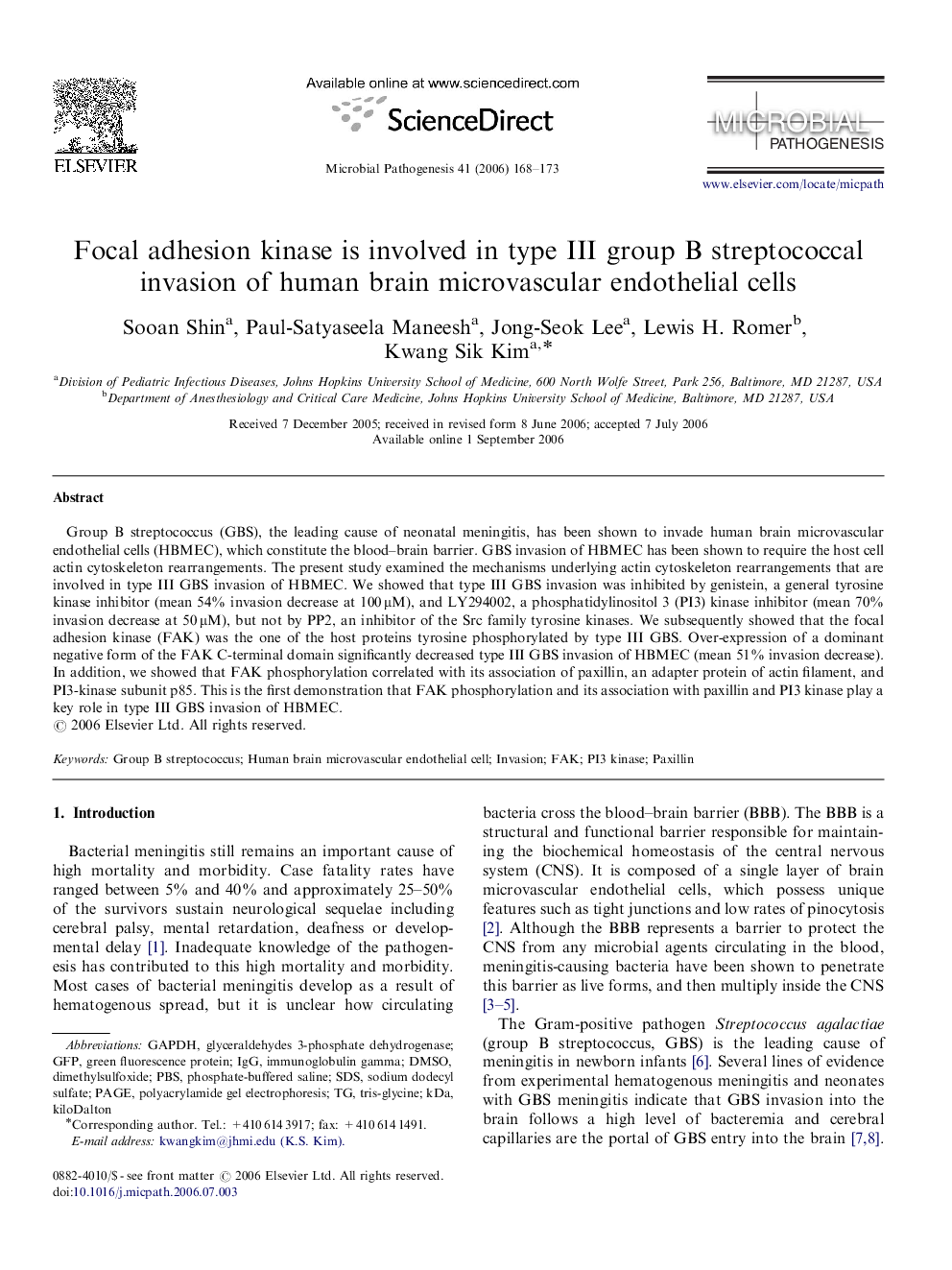| Article ID | Journal | Published Year | Pages | File Type |
|---|---|---|---|---|
| 3417372 | Microbial Pathogenesis | 2006 | 6 Pages |
Abstract
Group B streptococcus (GBS), the leading cause of neonatal meningitis, has been shown to invade human brain microvascular endothelial cells (HBMEC), which constitute the blood-brain barrier. GBS invasion of HBMEC has been shown to require the host cell actin cytoskeleton rearrangements. The present study examined the mechanisms underlying actin cytoskeleton rearrangements that are involved in type III GBS invasion of HBMEC. We showed that type III GBS invasion was inhibited by genistein, a general tyrosine kinase inhibitor (mean 54% invasion decrease at 100 μM), and LY294002, a phosphatidylinositol 3 (PI3) kinase inhibitor (mean 70% invasion decrease at 50 μM), but not by PP2, an inhibitor of the Src family tyrosine kinases. We subsequently showed that the focal adhesion kinase (FAK) was the one of the host proteins tyrosine phosphorylated by type III GBS. Over-expression of a dominant negative form of the FAK C-terminal domain significantly decreased type III GBS invasion of HBMEC (mean 51% invasion decrease). In addition, we showed that FAK phosphorylation correlated with its association of paxillin, an adapter protein of actin filament, and PI3-kinase subunit p85. This is the first demonstration that FAK phosphorylation and its association with paxillin and PI3 kinase play a key role in type III GBS invasion of HBMEC.
Keywords
SDSPAGEkiloDaltonFAKkDaPaxillinGAPDHGFPIgGPBSDMSOPI3 kinasepolyacrylamide gel electrophoresisInvasionDimethylsulfoxidesodium dodecyl sulfateHuman brain microvascular endothelial cellPhosphate-buffered salineGreen fluorescence proteinImmunoglobulin gammagroup B Streptococcusglyceraldehydes 3-phosphate dehydrogenase
Related Topics
Life Sciences
Immunology and Microbiology
Microbiology
Authors
Sooan Shin, Paul-Satyaseela Maneesh, Jong-Seok Lee, Lewis H. Romer, Kwang Sik Kim,
